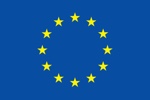2D materials for hybrid laser wavelength tuning
QEPAS and PTS systems require a fine control on the operating wavelength/frequency of the optical source without affecting its output power. This ESR Project aims to introduce a new paradigm moving from “static” to tunable sources based on two-dimensional materials. Low driving voltage and power, tunable and reconfigurable devices for ultimate sensing technology are envisioned.
The project will design, fabricate and characterize new tunable lasers based on silicon-nitride resonant cavities operating at 1.35 and 1.6 microns that integrate monolayer and/or bilayer graphene sheets without affecting the cavity Q-factor. The laser will be designed to provide tunability with the minimum intensity modulation, thus improving the performance of the laser as a source for spectroscopy. As the resonant reflector is tuned, its phase spectrum is altered, influencing the roundtrip phase condition and causing the wavelength of the lasing mode to change. By choosing the operating bias current appropriately, the intensity modulation can be reduced to almost zero.
The possibility to vary the graphene Fermi level will permit to efficiently control and engineer the complex refractive index of the resonant mode over a large range of operability leading to reconfigurable graphene-based devices that go beyond the state of art. Finally, the design will address the integration of the graphene-based field effect transistor (FET) with the silicon-nitride resonant cavity in terms of electric contacts. A control on the operating frequency over a few hundreds of GHz and modulation speed in the range of 1 kHz will be targeted. Fabrication of the tunable resonant cavity will be carried out at Tyndall National Institute by means of electron beam lithography and dry etching (this activity will be connected to ESR Project 1.3). Characterization of the fabricated prototypes will be carried out at both POLIBA and MTU by means of ad-hoc setups that combine tunable sources and electronic equipment to control the graphene-based field effect transistor. The tuning mechanism will ultimately be combined with the devices of ESRs 2.1, 1.3, 3.4, 3.5.
Expected Results
- Tunable cavity operating at 1.35 and 1.6 microns with a frequency tunable range of a few hundreds of GHz and a modulation speed of about 1 kHz
- Integration with UNIBA QEPAS system
Timeline
* N.B. Secondments and timings shown are indicative only, and may be subject to change.

 Artem Vorobev
Artem Vorobev Politecnico di Bari
Politecnico di Bari Munster Technological University
Munster Technological University





